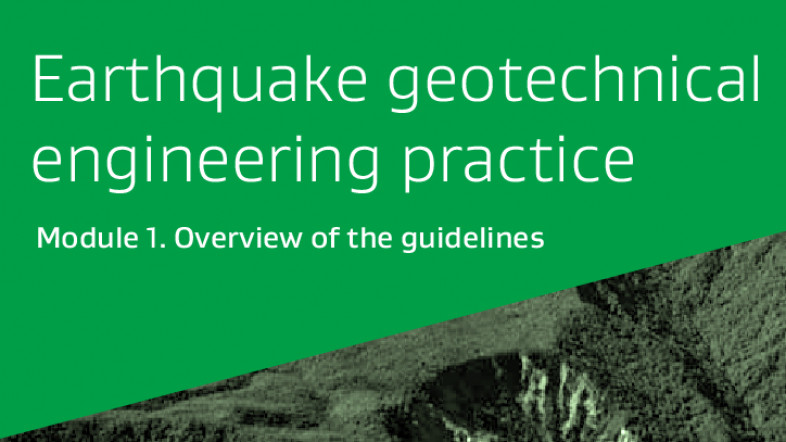Module 1: Overview of the geotechnical guidelines
About this document
Introduction
This is an overview of the modules which make up the Earthquake Geotechnical Engineering Practice geotechnical guidelines.
Contents
Module 1 introduces the subject of earthquake geotechnical engineering, provides context within the building regulatory framework, and provides guidance for estimating ground motion parameters for geotechnical design.
Regulatory context
The Earthquake Geotechnical Engineering Practice guidelines are issued under section 175 (s175) of the Building Act.
Guidance published by the chief executive under this section is only a guide; and if used, does not relieve any person of the obligation to consider any matter to which that information relates according to the circumstances of the particular case.
The practice series is not an Acceptable Solution or Verification Method. Building Consent Authorities (BCAs) are not bound to accept designs which follow these guidelines, however they may give reference to s175 guidance when satisfying themselves of compliance on 'reasonable grounds'.
Scope of application
In the revised version of the practice series, Module 1 'Overview of Guidelines', which relates specifically to earthquake hazards, contains updates to the seismic design hazard values for geotechnical design. These hazard values are based on a limited hazard study and represent the latest scientific knowledge in the interim period while the National Seismic Hazard Model (NSHM) is under review. It's important to note that this is relevant to the geotechnical design of new buildings only; there is no change to seismic assessments for existing buildings under the Earthquake Prone Buildings (EPB) legislation.
A full-scale revision to the National Seismic Hazard Model (NSHM) is currently underway and is expected to be completed in August 2022. Following the revision, MBIE will be undertaking a programme of work to translate the outputs of the NSHM into Building Code regulatory settings. Until then, designers are encouraged to make use of this guidance for geotechnical design of new buildings.
Engineering assessments for existing buildings are tied into the EPB legislation 2016. Accordingly, the following fall outside the scope of Module 1 (version 1).
- Structural design
- Assessment of existing buildings (including assessment of existing buildings made for purposes other than EPB decisions i.e. for market related activity)
- Design of building strengthening.
High level changes in this version include
- Additions to Section 1.5 The Building Code and Guidance to provide an overview of how the Modules fit into the Building Code system
- Additions and changes to Section 3. Geotechnical considerations for the built environment to include discussion on limit states and performance-based considerations
- Additions and changes to Section 5 Estimating ground motion parameters
- Changes to seismic design hazard values (for geotechnical design only) for the following locations – Gisborne, Napier, Whanganui, Palmerston North, Wellington, Blenheim, and surrounding areas
- The minimum peak ground acceleration (αmax) and earthquake magnitude (Mw) for low seismicity areas (notably Northland and Auckland) is now made explicit.
- Appendix A:
- Addition of Table A1: Peak Ground Acceleration (αmax) and Earthquake Magnitude (M) values recommended for Geotechnical Assessment, for Site Classes A, B, C, D and E, for level ground conditions. This table has been developed to provide values for hazard parameters Peak Ground Acceleration (PGA) and Earthquake Magnitude (M), for return period earthquakes from 25 to 2500 years for all locations listed in NZS 1170.5
- The same hazard parameters (PGA and M) are specified for all site classes that includes robust justification.
- Other content changes and clarifications as a result of feedback submissions.
Education
Learn about Module 1 (version 0) in the geotechnical education section. Learning material on Module 1 (version 1) will be developed soon.
Previous version
View the previous version (Version 0)
Resources
Other resources that are available include:
- New Zealand Dam Safety Guidelines (2023) on the New Zealand Society on Large Dams website
- Bridge Manual on the New Zealand Transport Association website
- Repairing and rebuilding houses affected by the Canterbury earthquakes
- Planning for Development of Land on or Close to Active Faults on the Ministry for the Environment website
- National Seismic Hazard Model – the revision programme on the GNS website
- The 2010 National Seismic Hazard Model on the GNS Science website.
- Early access to scientific research papers on the re-valuation of seismic hazard for geotechnical and assessment on the NZSEE website
